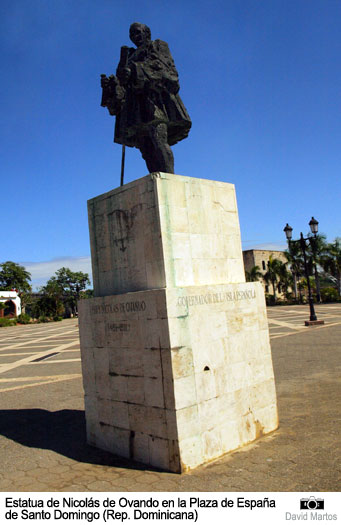On September 3th,1501, taking only one year in power Don Francisco de Bobadilla, the Catholic Monarchs decided to dispense with their services and name the commendator of Lares Frey Nicolás de Ovando governor of Indias and Tierra Firme, except for the two governorates granted to Alonso de Ojeda (Coquibacoa) and Vicente Yáñez Pinzón (now the northern coast of Brazil), in whose jurisdictions there was never an administration in the style of the Hispaniola island one.
Bobadilla’s work, while generally positive, had several dark points that led the Kings to decide to cease. The bad treatment of the Cristopher Columbus and his brothers and the seizure of their property did not like anything, especially the reina Isabel, and Their fiscal policy of lowering taxes on gold mining did not convince them even though the improvement in the economic returns of the island was significant. Similarly, the Indian rebels in the Higüey did not cease and Bobadilla was unable to appease them in any way.
The new governor left Cadiz on February 13th,1502 in command of the largest fleet ever sent to the New World: thirty ships (four naos and twenty-six caravels), one thousand two hundred Spaniards, among which we can find royal officers, doctors, apothecaries, masons, carpenters, farming families, Franciscan friars, etc. It was organized by the bishop of Badajoz, Juan Rodríguez Fonseca and carried a great deal of equipment, tools, seeds and animals, including fifty-nine horses, to promote colonization and settlement of the island.
It was also the most expensive and had to be financed by the royal coffers because due to the numerous incidents, rebellions and problems occurred in Hispaniola Island few private entities were willing to make investments in such an adventure.
They arrived at Santo Domingo on 15th April 1502. Ovando had very precise orders from the Catholic Monarchs whose objective was to initiate and consolidate an authentic colonization process on the Hispaniola island:
– The pacification of the island through the definitive subjugation of the chieftains of Jaragua and Higüey.
– Foundations of new towns and cities with the aim of bringing together the Spanish population in urban centres, since until the arrival of Ovando almost all of them was scattered throughout rural areas.
– Exploration and reconnaissance of the nearby Antilles. Cuba y Puerto Rico were the primary targets sent to Captain Sebastián de Ocampo and Juan Ponce de León respectively.
– Establishment of the Encomiendas of Indians’ distributions. The encomienda and distribution was reformed, giving it a more human aspect, on the initiative of Queen Isabel, treating them not as servants but as free people and subjects of the crown, with the right to education and a decent salary for their work.
He also carried out express orders for re-establishing the heritage of Christopher Columbus on the island that had been expropriated and sold by Bobadilla after the researches carried out and to initiate a residencia trial right at the same for his government actions.
With his arrival, a new period of settlement and consolidation of the Spanish presence in the Caribbean Sea opens up through the development of an economy and an administration that would allow the optimum management of resources. It is the true beginning of the formation of the new Hispanic-American society.
